Abstract
Food reinforcement for key pecking by three pigeons was arranged by a variable-interval schedule and a device that assigned each reinforcement to one of 10 component response rates corresponding to 10 classes of equally reinforced interresponse times ranging from 1.0 to 6.0 sec in 0.5-sec classes. The overall number of reinforcements per hour was varied from one to more than 60. Overall response rate was a monotonically increasing, negatively accelerated function of the overall number of reinforcements per hour. This function was decomposed into two time-allocation functions: (1) the time allocated to all of the reinforced component response rates as a function of the total reinforcement rate, and, (2) the time allocated to a particular reinforced component response rate as a function of the reinforcement rate for that component. Asymptotic response rate was predicted by combining the asymptotes of the two separate time-allocation functions: virtually all of the time was spent responding, and the percentage of the time spent responding that was allocated to a particular reinforced component response rate roughly equalled the relative reinforcements per hour for that component.
Full text
PDF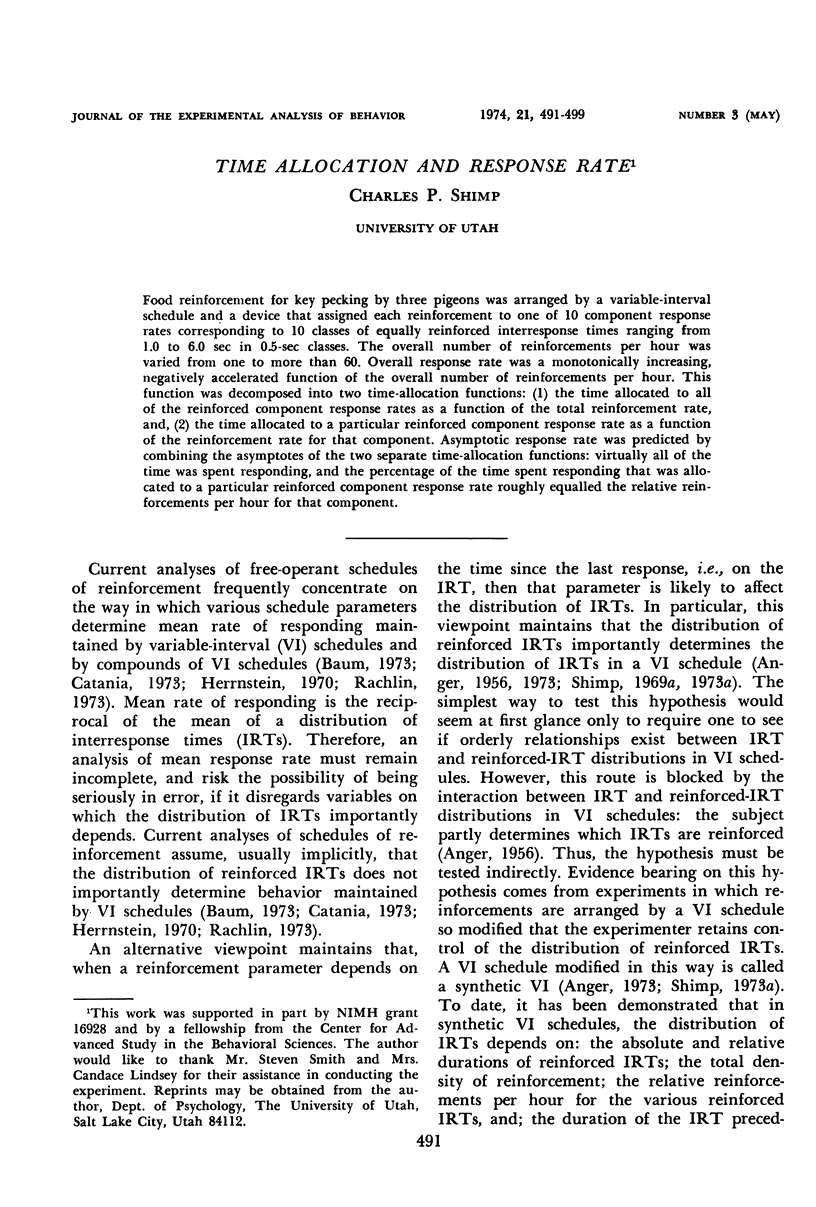
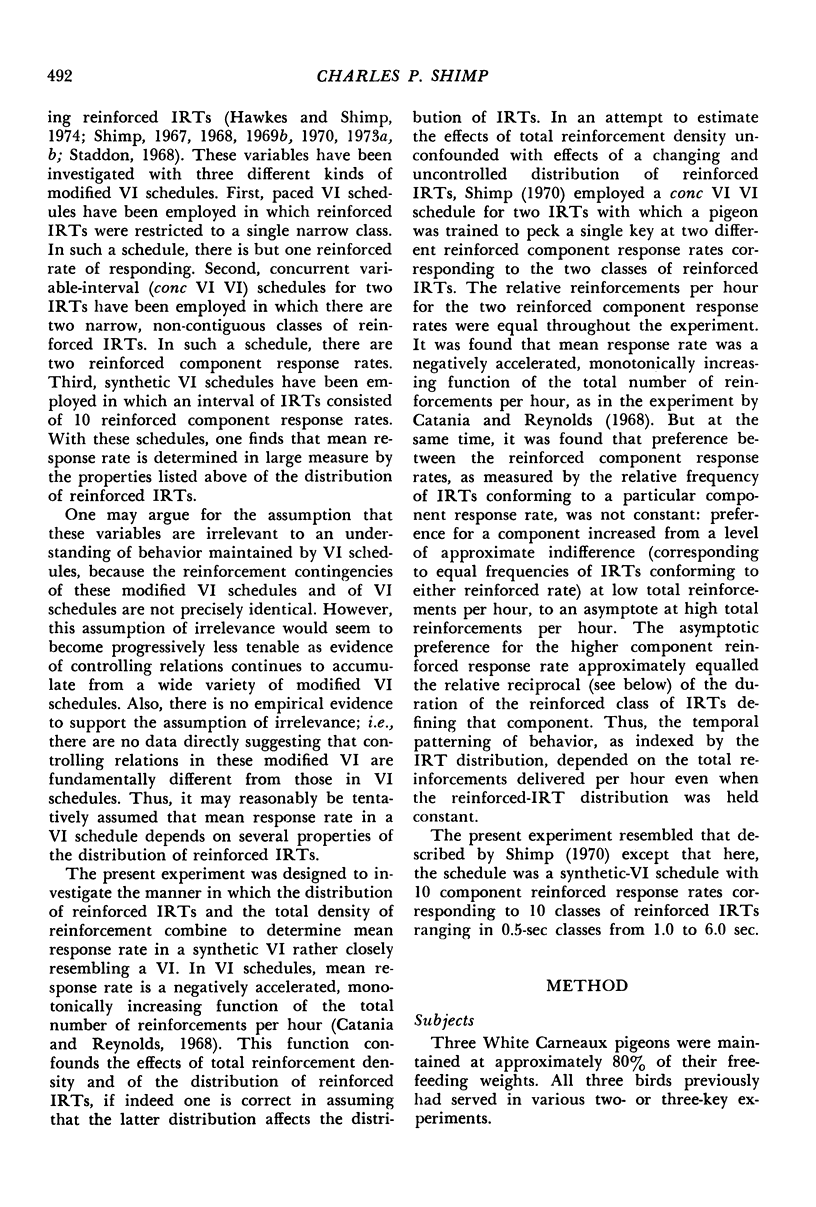
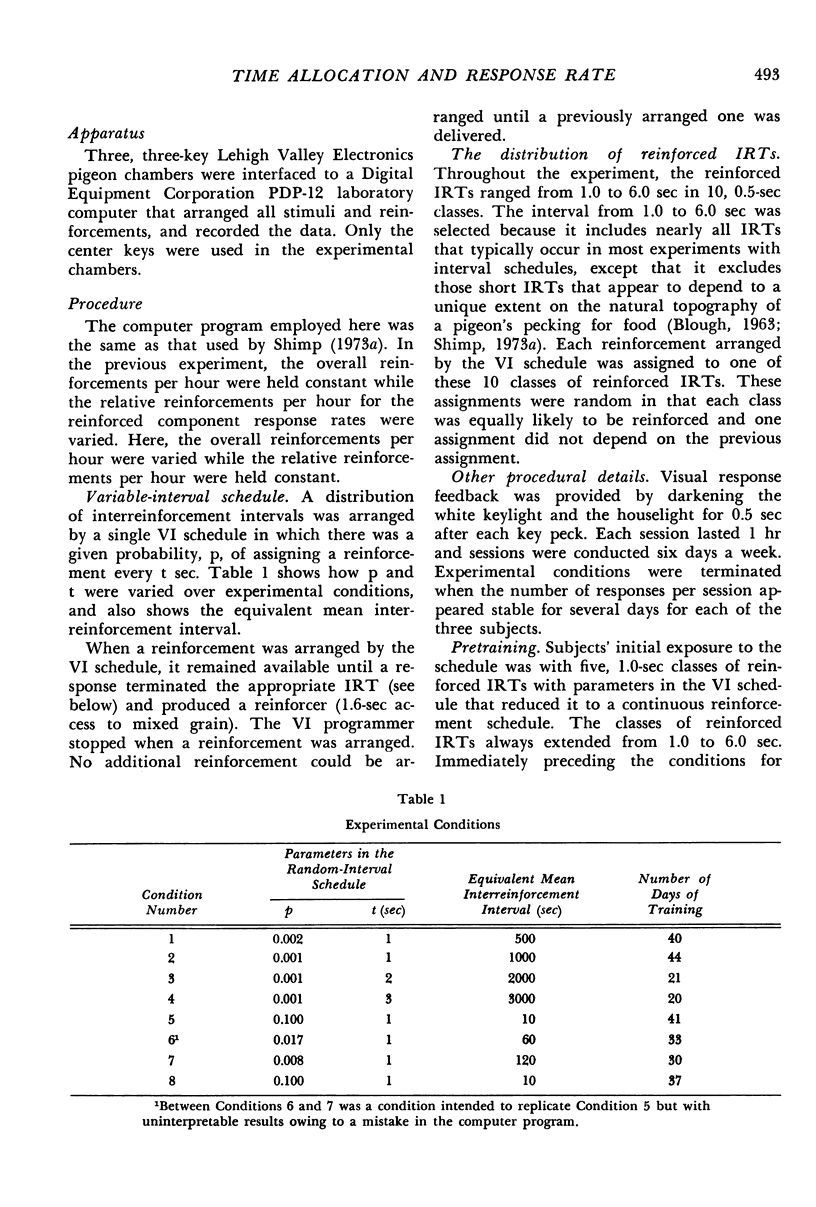
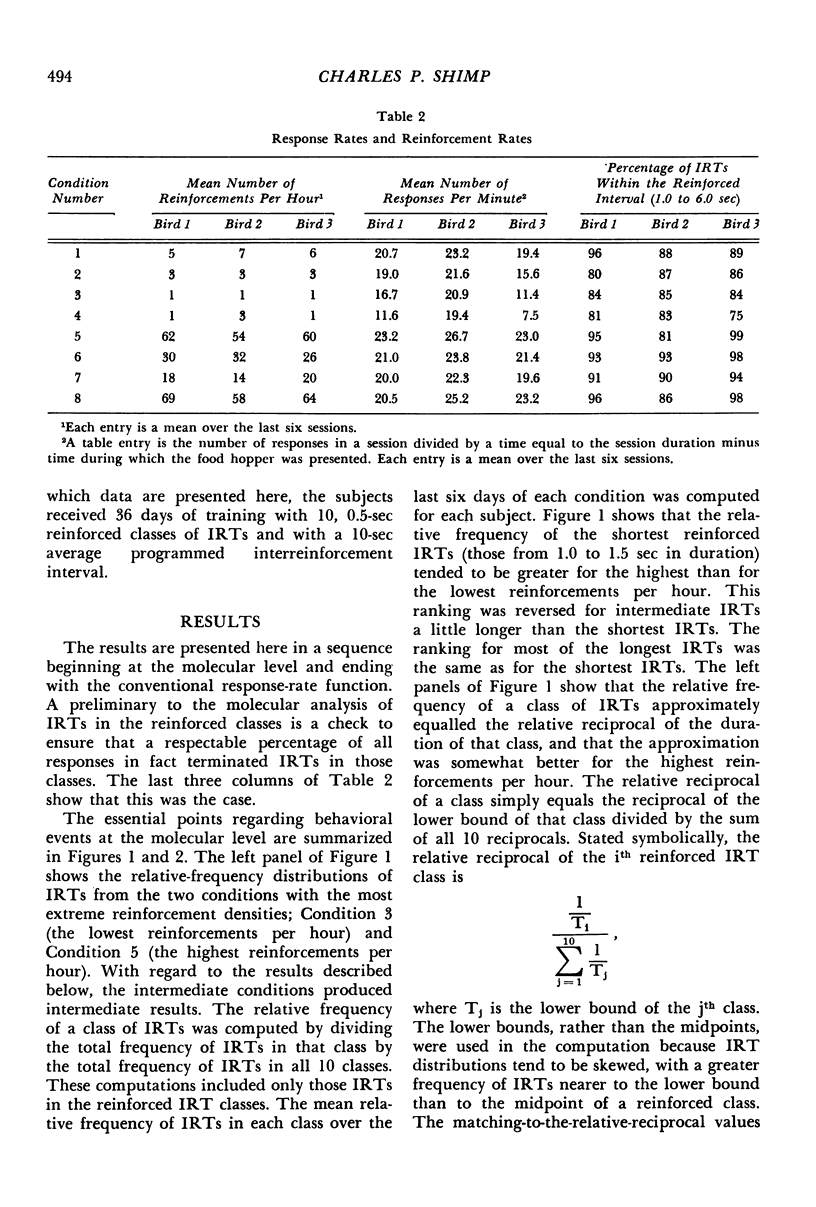
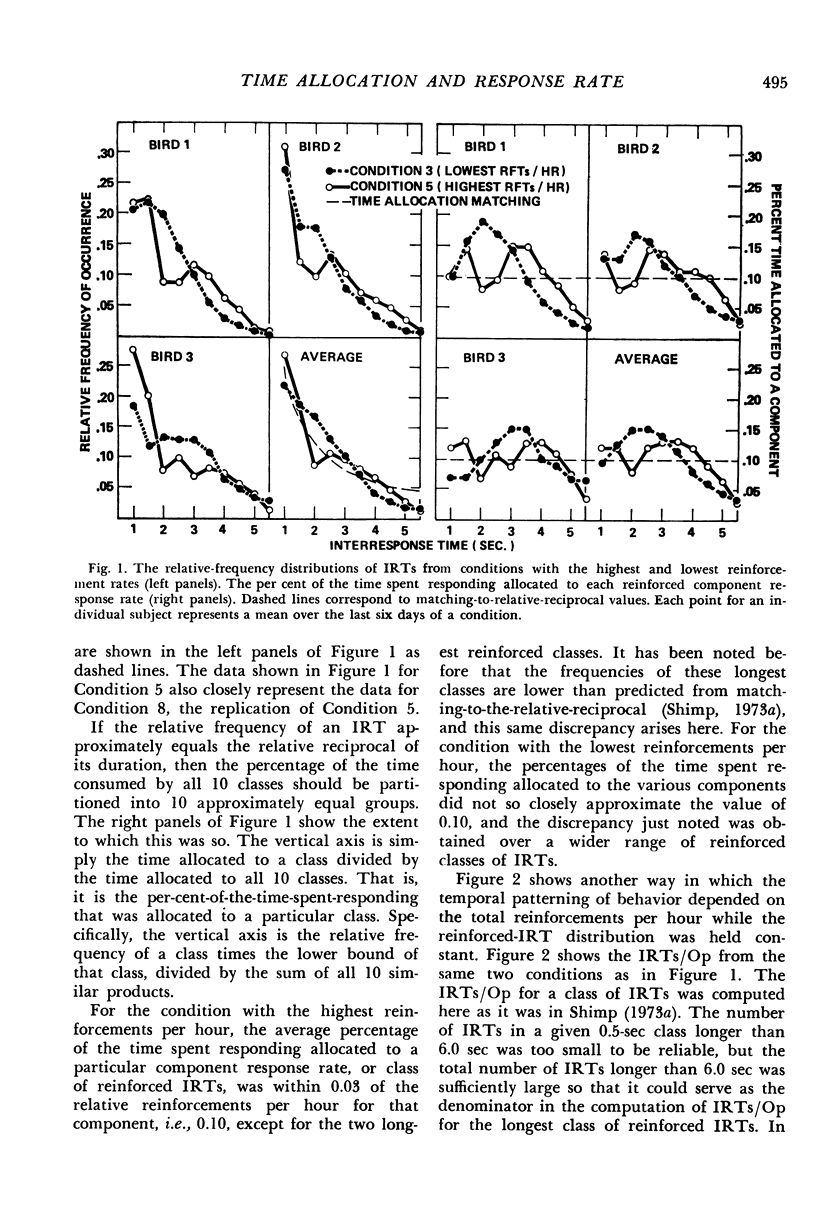
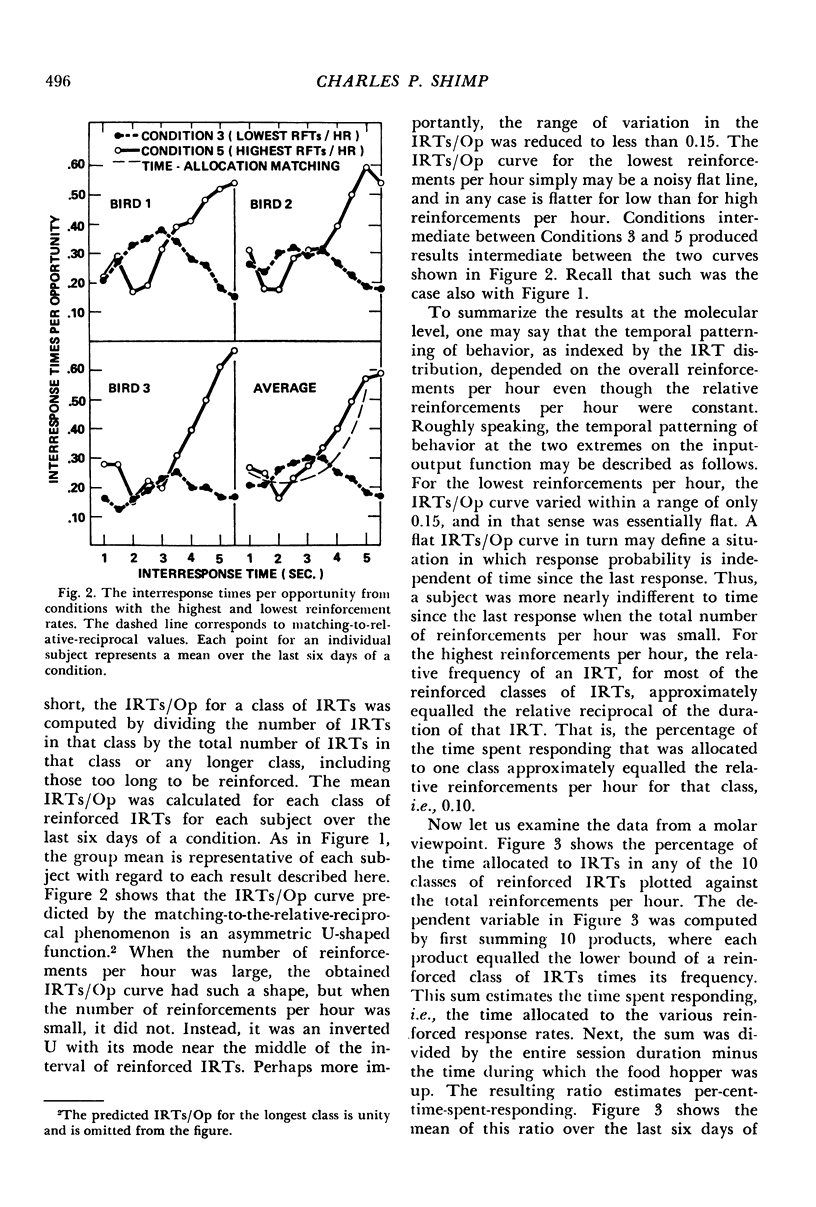
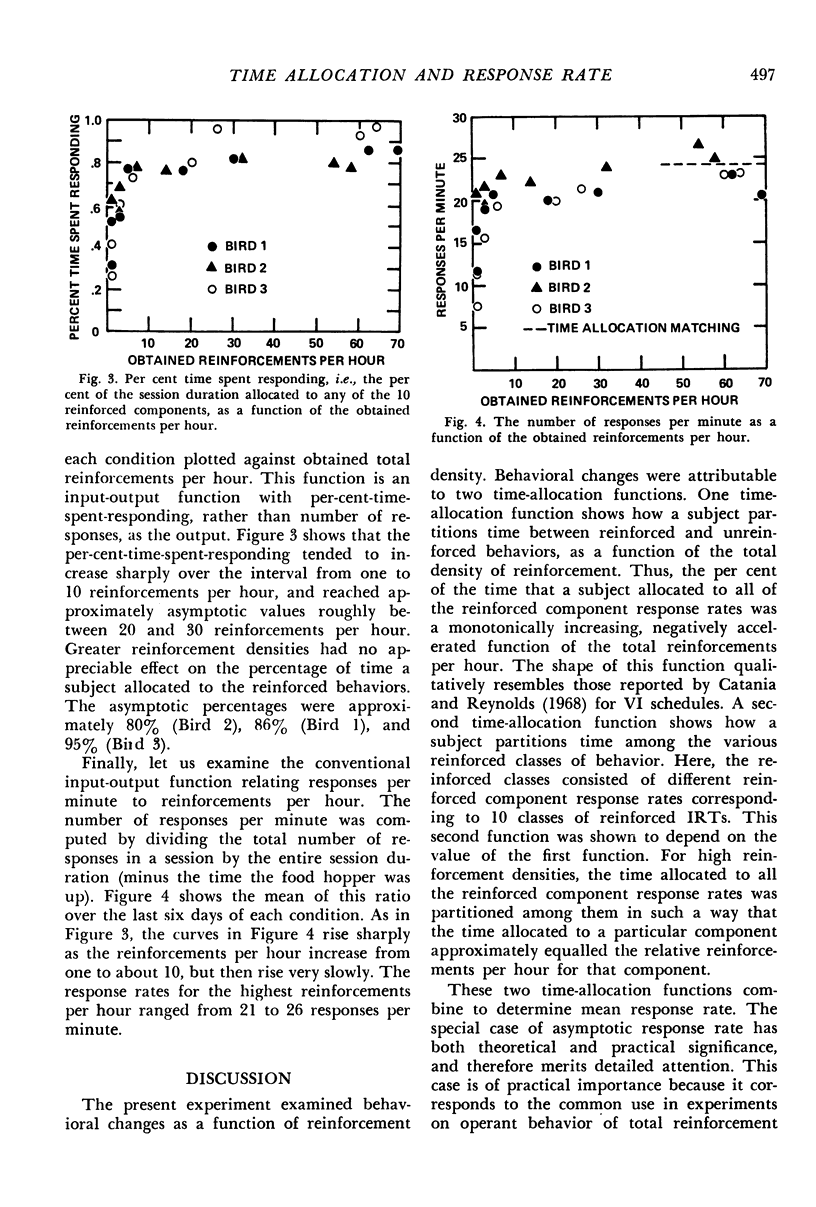
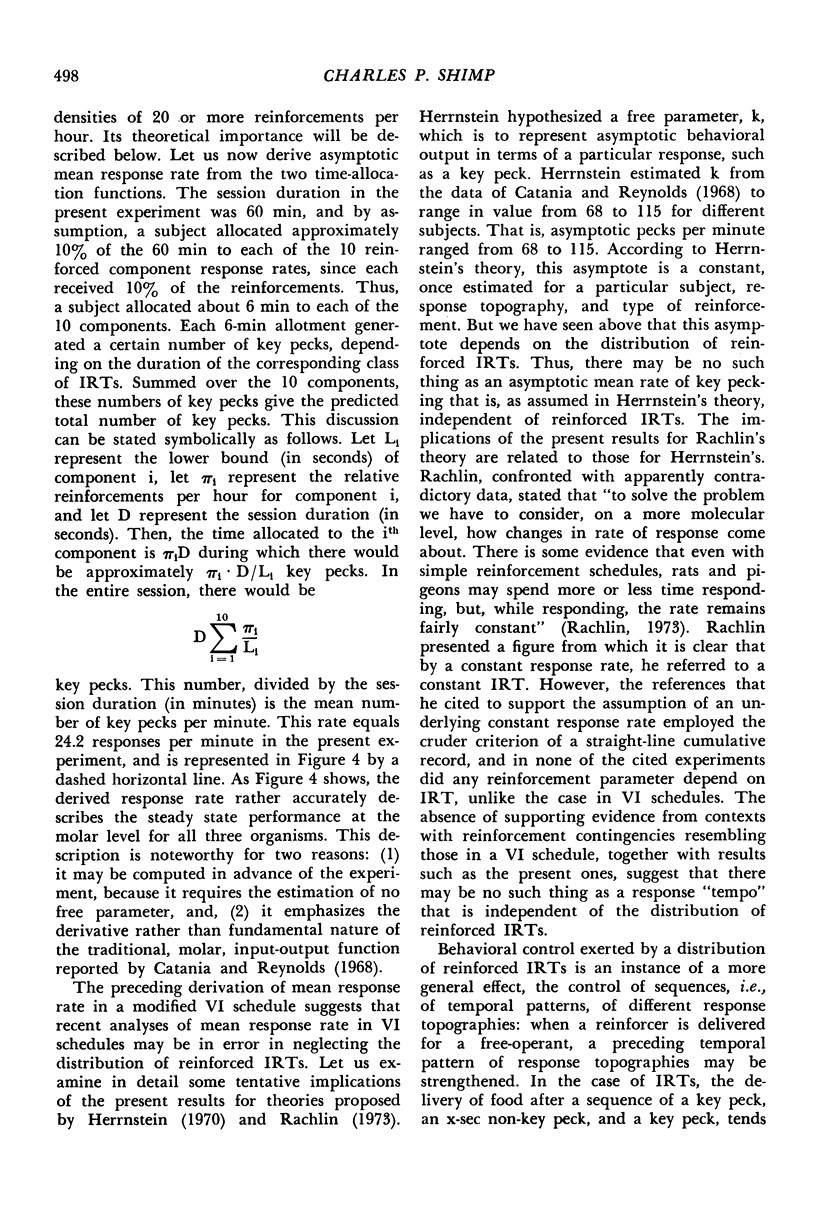
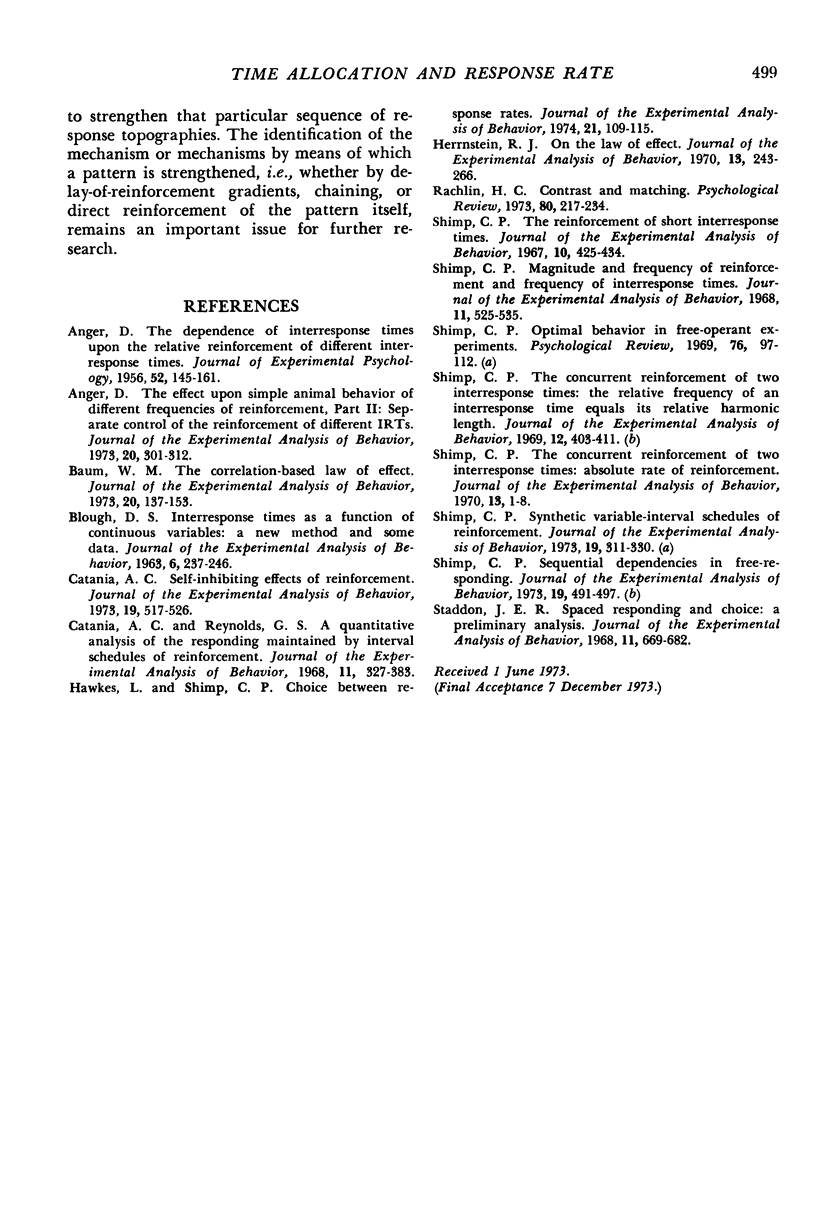
Selected References
These references are in PubMed. This may not be the complete list of references from this article.
- ANGER D. The dependence of interresponse times upon the relative reinforcement of different interresponse times. J Exp Psychol. 1956 Sep;52(3):145–161. doi: 10.1037/h0041255. [DOI] [PubMed] [Google Scholar]
- Anger D. The effect upon simple animal behavior of different frequencies of reinforcement, Part II: separate control of the reinforcement of different IRTs. J Exp Anal Behav. 1973 Sep;20(2):301–312. doi: 10.1901/jeab.1973.20-301. [DOI] [PMC free article] [PubMed] [Google Scholar]
- Baum W. M. The correlation-based law of effect. J Exp Anal Behav. 1973 Jul;20(1):137–153. doi: 10.1901/jeab.1973.20-137. [DOI] [PMC free article] [PubMed] [Google Scholar]
- Blough D. S. Interresponse time as a function of continuous variables: a new method and some data. J Exp Anal Behav. 1963 Apr;6(2):237–246. doi: 10.1901/jeab.1963.6-237. [DOI] [PMC free article] [PubMed] [Google Scholar]
- Catania A. C., Reynolds G. S. A quantitative analysis of the responding maintained by interval schedules of reinforcement. J Exp Anal Behav. 1968 May;11(3 Suppl):327–383. doi: 10.1901/jeab.1968.11-s327. [DOI] [PMC free article] [PubMed] [Google Scholar]
- Catania A. C. Self-inhibiting effects of reinforcement. J Exp Anal Behav. 1973 May;19(3):517–526. doi: 10.1901/jeab.1973.19-517. [DOI] [PMC free article] [PubMed] [Google Scholar]
- Hawkes L., Shimp C. P. Choice between response rates. J Exp Anal Behav. 1974 Jan;21(1):109–115. doi: 10.1901/jeab.1974.21-109. [DOI] [PMC free article] [PubMed] [Google Scholar]
- Herrnstein R. J. On the law of effect. J Exp Anal Behav. 1970 Mar;13(2):243–266. doi: 10.1901/jeab.1970.13-243. [DOI] [PMC free article] [PubMed] [Google Scholar]
- Shimp C. P. Magnitude and frequency of reinforcement and frequencies of interresponse times. J Exp Anal Behav. 1968 Sep;11(5):525–535. doi: 10.1901/jeab.1968.11-525. [DOI] [PMC free article] [PubMed] [Google Scholar]
- Shimp C. P. The concurrent reinforcement of two interresponse times: absolute rate of reinforcement. J Exp Anal Behav. 1970 Jan;13(1):1–8. doi: 10.1901/jeab.1970.13-1. [DOI] [PMC free article] [PubMed] [Google Scholar]
- Shimp C. P. The concurrent reinforcement of two interresponse times: the relative frequency of an interresponse time equals its relative harmonic length. J Exp Anal Behav. 1969 May;12(3):403–411. doi: 10.1901/jeab.1969.12-403. [DOI] [PMC free article] [PubMed] [Google Scholar]
- Shimp C. P. The reinforcement of short interresponse times. J Exp Anal Behav. 1967 Sep;10(5):425–434. doi: 10.1901/jeab.1967.10-425. [DOI] [PMC free article] [PubMed] [Google Scholar]
- Staddon J. E. Spaced responding and choice: a preliminary analysis. J Exp Anal Behav. 1968 Nov;11(6):669–682. doi: 10.1901/jeab.1968.11-669. [DOI] [PMC free article] [PubMed] [Google Scholar]


